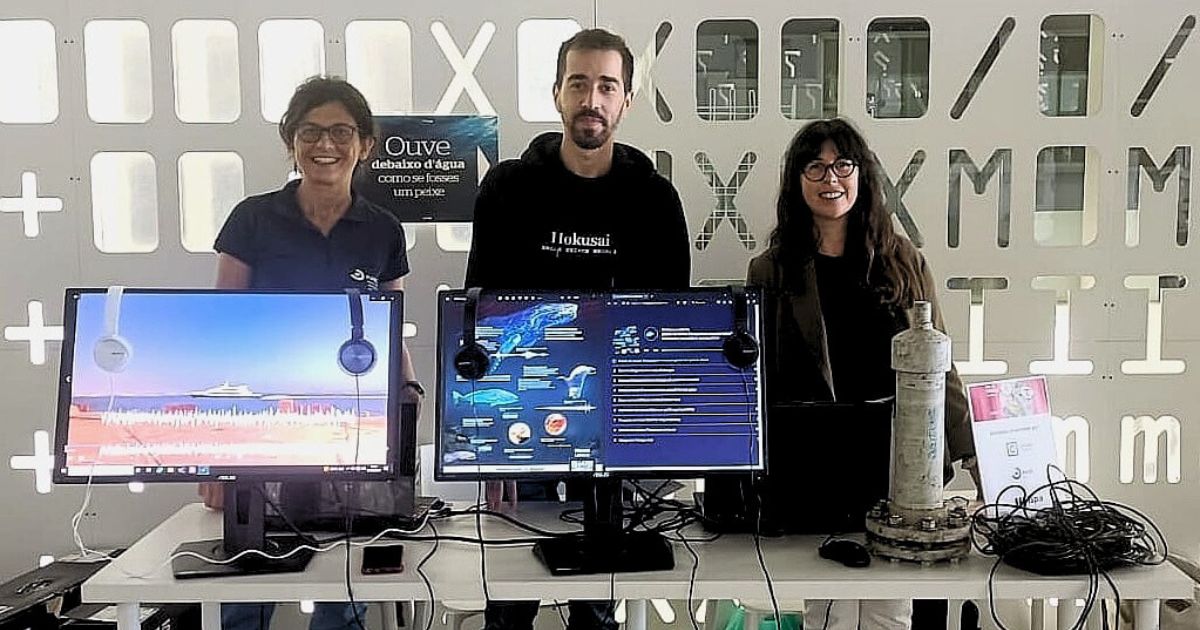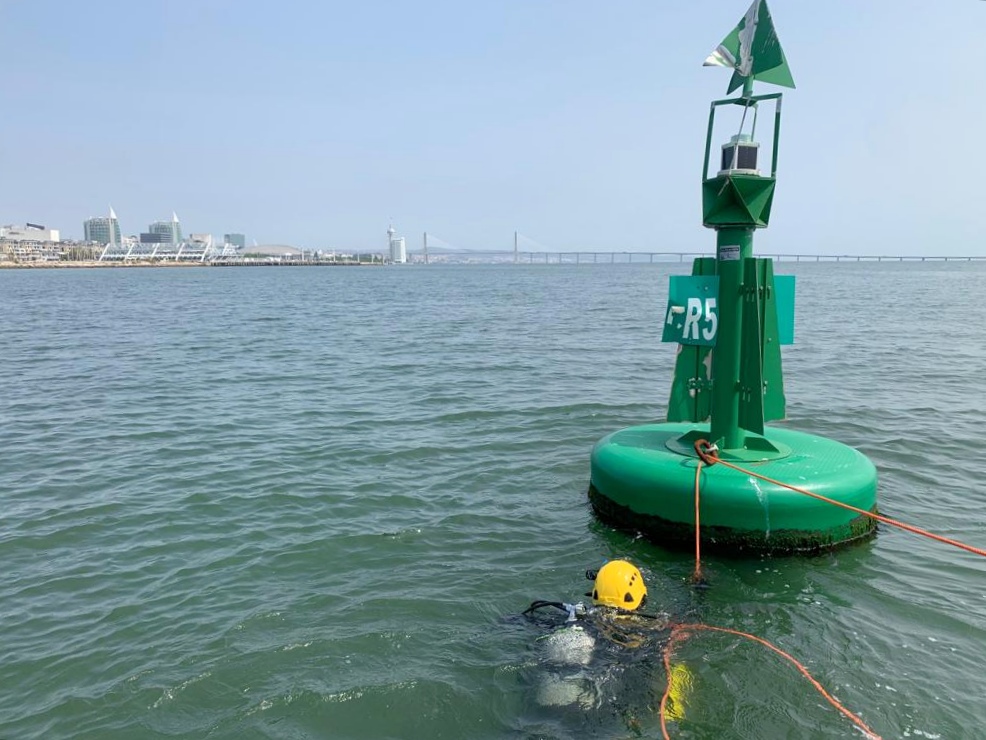Using passive acoustic monitoring to assess scianids spawning aggregations.
 Since 2016, a land-based PAM station has been operating in the southern margin of the Tagus estuary (Military Air Force, BA6) and since 2020 a number of autonomous acoustic loggers were deployed in several locations in the Tagus estuary within the scope of FISHNOISE and MIGRACORV projects and the MARE CoastNet research infrastructure. These audio recordings allowed to “hear” the presence of two sciaenids: the invasive weakfish (Cynoscion regalis; first reported in the Tagus in 2015, Morais et al., 2017) and the native meagre (Argyrosomus regius). Because there is ecological overlap between the two species, concern arises about possible impacts of the invasive species on the confamiliar meagre (Cerveira et al. 2021). However, as both species are highly vocal and can be differentiated acoustically (Amorim et al., 2023), PAM could be an innovative approach to provide insights into their temporal and geographical distribution in the Tagus estuary during the breeding season, an information critical for management and conservation. Recently, recordings from PAM station at BA6 revealed considerable variability of meagre’s calling activity throughout the breeding season in the Tagus estuary (Vieira et al., 2022). Although a relation between egg deposition and calling activity is known in captivity (Vieira et al., 2019), it is still unclear if variations in calling behaviour in the field reflect changes in egg release and egg quality. If so, PAM might be used as a proxy of spawning for these species.
Since 2016, a land-based PAM station has been operating in the southern margin of the Tagus estuary (Military Air Force, BA6) and since 2020 a number of autonomous acoustic loggers were deployed in several locations in the Tagus estuary within the scope of FISHNOISE and MIGRACORV projects and the MARE CoastNet research infrastructure. These audio recordings allowed to “hear” the presence of two sciaenids: the invasive weakfish (Cynoscion regalis; first reported in the Tagus in 2015, Morais et al., 2017) and the native meagre (Argyrosomus regius). Because there is ecological overlap between the two species, concern arises about possible impacts of the invasive species on the confamiliar meagre (Cerveira et al. 2021). However, as both species are highly vocal and can be differentiated acoustically (Amorim et al., 2023), PAM could be an innovative approach to provide insights into their temporal and geographical distribution in the Tagus estuary during the breeding season, an information critical for management and conservation. Recently, recordings from PAM station at BA6 revealed considerable variability of meagre’s calling activity throughout the breeding season in the Tagus estuary (Vieira et al., 2022). Although a relation between egg deposition and calling activity is known in captivity (Vieira et al., 2019), it is still unclear if variations in calling behaviour in the field reflect changes in egg release and egg quality. If so, PAM might be used as a proxy of spawning for these species.
 These are the major objectives of this project: 1) Characterise the temporal and spatial overlap of spawning aggregations of weakfish and meagre in the Tagus estuary using PAM. To realize this objective, this project includes a recording station in Montijo Air Force Base (BA6) and five autonomous passive acoustic logger placed in several sites throughout the Tagus estuary. Last deployments occured on june 2023. 2) Correlate daily chorus duration and intensity with density/quality of sciaenid eggs. In May of 2023 we started to use plankton net surveys at the pier of BA6 to collect sciaenid eggs. Until now we have found several pelagic organisms including fish larvaes. 3) Carry outreach actions and scientific dissemination. We have also done several outreach activities for the general public in partneship with NETWORK OF CIÊNCIA VIVA CENTRES.
These are the major objectives of this project: 1) Characterise the temporal and spatial overlap of spawning aggregations of weakfish and meagre in the Tagus estuary using PAM. To realize this objective, this project includes a recording station in Montijo Air Force Base (BA6) and five autonomous passive acoustic logger placed in several sites throughout the Tagus estuary. Last deployments occured on june 2023. 2) Correlate daily chorus duration and intensity with density/quality of sciaenid eggs. In May of 2023 we started to use plankton net surveys at the pier of BA6 to collect sciaenid eggs. Until now we have found several pelagic organisms including fish larvaes. 3) Carry outreach actions and scientific dissemination. We have also done several outreach activities for the general public in partneship with NETWORK OF CIÊNCIA VIVA CENTRES.
This initiative bring together researchers from four MARE research units (ULisboa, ISPA, IPLeiria, and Évora) and a researcher from CE3C.
